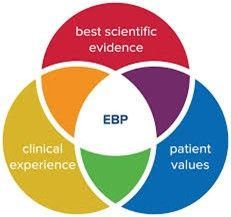One Vital Diagnosis You Don’t See in the DSM-5
This disorder was proposed to be included in DSM-5 to capture the dysfunctions experienced by children and adolescents exposed to chronic traumatic stress.

When clinicians evaluate children for potential trauma, the DSM-5 gives them two choices. These are Post-Traumatic Stress Disorder (PTSD) or Unspecified Trauma- and Stress-Related Disorders. Neither of these disorders describes adverse childhood experiences. They leave out the one vital diagnosis that quantifies the behaviors in children that lead to consequences of functioning in adolescence and adulthood.
Dr. Bessel van der Kolk is a renowned psychiatrist and specialist in trauma for children and adults. In his book, The Body Keeps the Score, he discusses the concept of developmental trauma disorder (DTD). This disorder was proposed to be included in DSM-5 to capture the dysfunctions experienced by children and adolescents exposed to chronic traumatic stress. At the time of the DSM-5 publishing, the American Psychiatric Association indicated that not sufficient evidence existed to warrant it as a diagnosis.
However, for those clinicians who deal with children exposed to trauma, DTD is an essential part of their understanding of how trauma impacts someone at an early age. Among the criteria assigned to DTD are:
1. Exposure to episodes of violence or disruptions of caregivers
2. Affective and physiological dysregulation, such as the inability to modulate affect, regulate bodily functions, and diminished awareness of sensations.
3. Attentional and behavioral dysregulation as indicated by impaired coping with stress
4. Self and relational dysregulation is shown by lack of self-esteem, difficulty with separation, defiance, and other behaviors.
In Dr. van der Kolk’s study in 2019, he and others found that “DTD’s comorbidities overlap with but extend beyond those of PTSD to include panic, separation anxiety, and disruptive behavior disorders.”
As Martin Teicher in Scientific American indicated, “Research on the effects of early maltreatment tells a different story: that early maltreatment has enduring negative effects on brain development. Our brains are sculpted by our early experiences. Maltreatment is a chisel that shapes a brain to contend with strife, but at the cost of deep, enduring wounds. Childhood abuse isn’t something you ‘get over.’ It is an evil that we must acknowledge and confront if we aim to do anything about the unchecked cycle of violence in this country.”
For clinicians, these findings are significant to begin incorporating them into assessment and treatment. Although DTD cannot be used for diagnostic or insurance purposes, treating the child and adolescent becomes essential. Looking beyond the existing behaviors back to the original traumas can assist the clinician in finding the best approach to mitigate trauma triggers, re-traumatization, and their impacts on the child. Knowing their history and the events that shaped the child’s functioning or developmental delays at an early age, the clinician can shape interventions to mitigate trauma’s impact. In the future, DTD needs to be part of the existing training and discussion until DSM-6 includes it.




